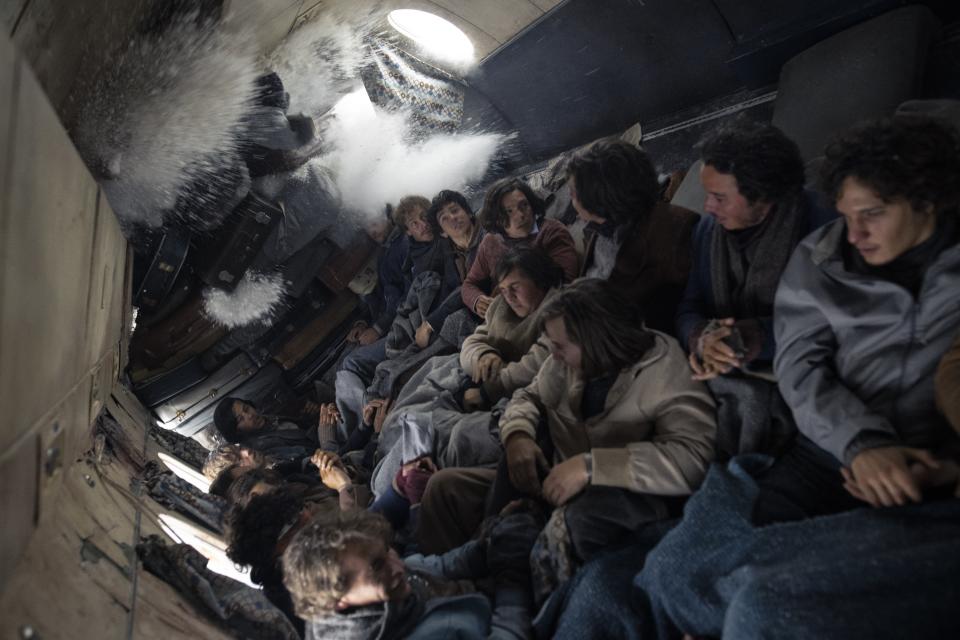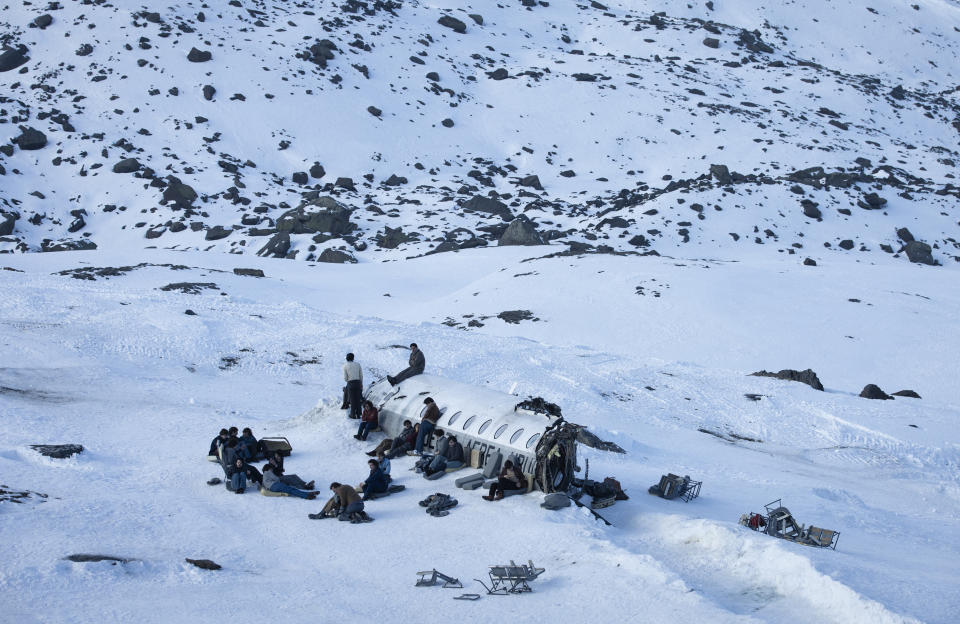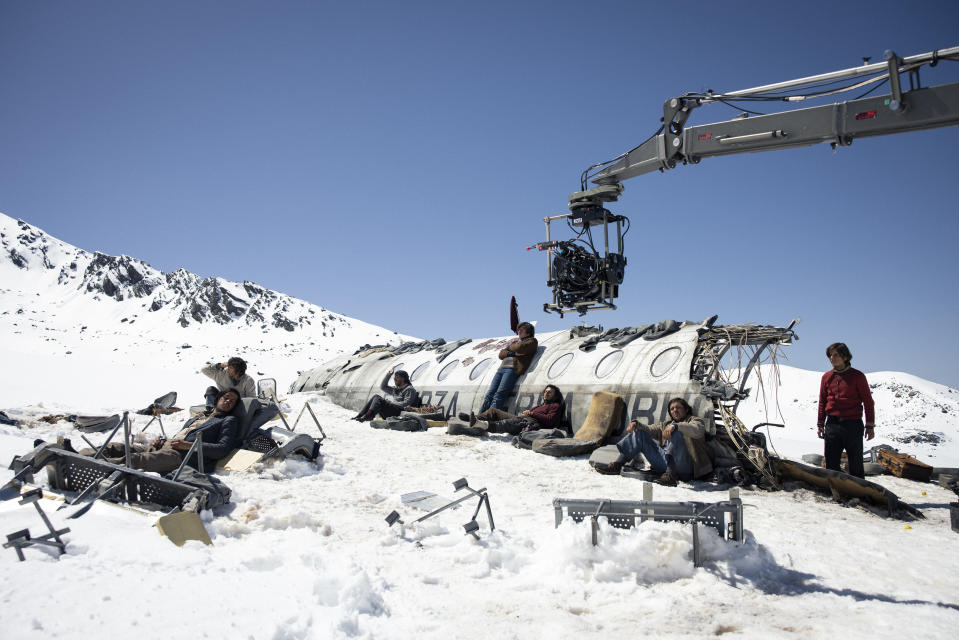‘Society of the Snow’ Recreates Real-Life 1972 Plane Crash

- Oops!Something went wrong.Please try again later.
J.A. Bayona’s “Society of the Snow,” the true-life survival thriller about the 1972 plane crash in the Andes with the Uruguayan rugby team, was shot with documentary-like realism by cinematographer Pedro Luque to connect the characters with the hostile environment. This was enhanced by photo-realistic VFX (including the use of mobile LED screens for 360-degree mountain backgrounds), led by supervisors Félix Bergés and Laura Pedro of El Ranchito. The Spanish film made the Oscar shortlists for international feature, visual effects, and sound.
“Being as real as possible is counter-intuitive,” Luque told IndieWire. “This happened in the 1970s. It’s not there anymore. It can’t be real, but it has to be real. That drive, it’s from Bayona, to be as precise as we can.”
More from IndieWire
Our $9 Billion Year Owes a Debt of Gratitude to Miyazaki and Yamazaki as Well as 'Wonka'
Jonathan Glazer Admits He Was 'Afraid' to Visit Auschwitz Before Making 'The Zone of Interest'
The cinematographer and VFX team studied the Valley of the Tears, the site of the plane crash, to understand the geography, the space, and its dimensions. To recreate the Valley of the Tears, a special mountain photography unit shot background plates and photogrammetry in the most difficult areas to climb, capturing every lighting condition at all hours of the day.
“We did a lot of shots that were going to be used as backgrounds,” added Luque. “After that, the VFX people knew they couldn’t be too intrusive because we were doing very sensitive work with the actors.”

This background footage included lots of the climbs throughout the expedition in different locations and different directions. “This was very useful because when they climb the big wall we needed to have enough backgrounds for all the points,” Pedro told IndieWire.”
This footage was displayed in a complex mobile LED screen system built in a parking lot of the main set: a ski resort in Spain’s Sierra Nevada, which served as the Valley of the Tears, where they shot replicas of the plane’s fuselage on gimbals or platforms for interior and exterior shooting. The LED system contained sky panels on the roof and made it possible to instantly modify the color temperature, exposure, and camera placement for the Andes background environments.
In addition, “Society of the Snow” used a 300 by 300-foot reproduction of the mountain made with scaffold and foam in a hangar. Two other sets were situated on higher levels; the largest had a bunker made of concrete where a fuselage would rise and lower on scissor lifts to mimic the snow levels of the avalanche (with real snow on top). A second fuselage for exterior shooting was used in a lower location for when the weather got too intense. A third fuselage was transported to the top of the valley for more doc-like shooting.
“We found a valley that was high enough so we could have good snow and a good mile of surroundings that was similar to the place where the plane crashed,” the cinematographer said. “But all the backgrounds were added digitally. We took care of not doing it CG, so it looked more real.”

To plan and coordinate shoots in the various areas, the VFX team created a videogame-like previs app using the Unreal engine. In conjunction with photos, camerawork, drones, and helicopters, this allowed Bayona and the crew to mark optics, hours of light, camera altitude, and positions within the valley. “
“At the very beginning, we created a very basic application,” Bergés told IndieWire. “But every single day they would ask: ‘I want this,’ ‘I want that,’ ‘I want this,’ so we changed and upgraded [it]. The good thing is everybody had this application, and it was a very successful production because the light was very tricky.”
The first action set piece was the recreation of the plane crash, in which the aircraft lost its wings and slid down the mountainside, pushing the seats from back to front like an accordion. It was shot last in collaboration with SFX and the stunt team, and was from the passengers’ perspective, using a camera crane.
They built a full plane fuselage for the start of the journey and then during the crash, a broken fuselage was placed on a gimble to reproduce the physical intensity and free fall of the experience for the characters. In addition, they built little pieces of the fuselage for inserts, around which were LED screens with a projection of the mountain. “The VFX was strict enough to say, ‘Wall three needed to come out, platform three needed to come in, seats 22, 23, 24, 25 were going out,” Luque said.

“The LED screen was, for us, very important to be flexible,” added Pedro. “The huge difference between green screens and LED screens is that we have very nice lighting in an environment that is so white.”
The avalanche, which involved a lot more stunt work and SFX, was like a disastrous theme park ride. “We had a platform made with foam and one foot of snow on top of it, and we had these holes where the actors will be,” Luque added. “You have 18 actors, eight corpses, and two camera crews. Every shot had its own complexity. The cameras were lying low on the snow, the lenses got foggy and got snow, which added another layer of realism.”
“The avalanche is 90 percent real. We only worked for the exterior shots [which included the backgrounds on the LED screens and set extension],” Bergés said. “But the moment where the avalanche came inside to the airplane is real snow from the SFX department.”
However, there was no room for light. “So light was coming from the windows, and a little trip of LED light that was behind the camera, just to control contrast,” Luque said. “It was frantic and crazy.”
“Society of the Snow” is currently in limited release. The film streams on Netflix January 4.
Best of IndieWire
Quentin Tarantino's Favorite Movies: 60 Films the Director Wants You to See
Where to Watch This Week's New Movies, Including 'The Iron Claw' and 'All of Us Strangers'
2023 Movies Shot on Film: From 'Oppenheimer' to 'Killers of the Flower Moon' and 'Maestro'
Sign up for Indiewire's Newsletter. For the latest news, follow us on Facebook, Twitter, and Instagram.

